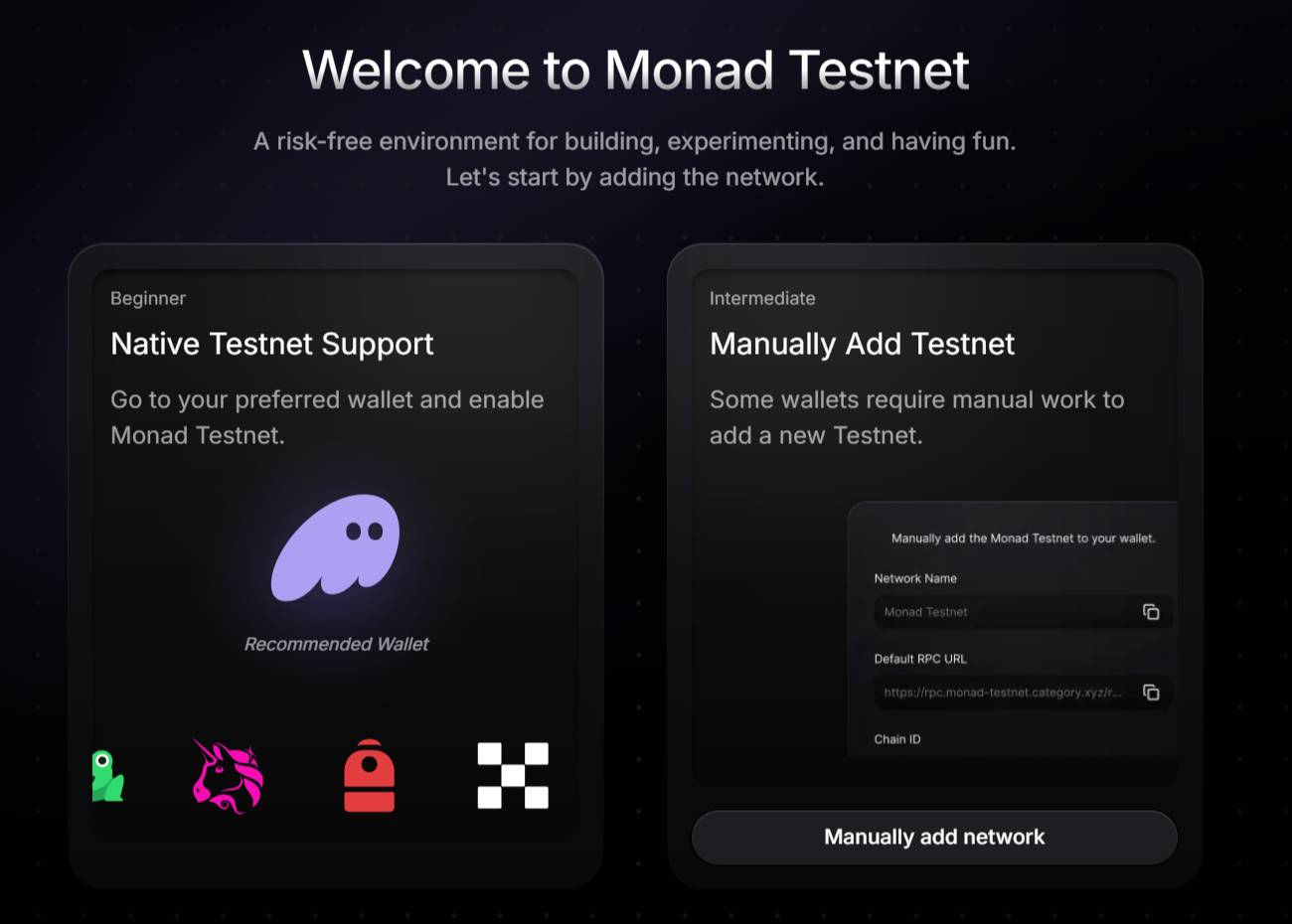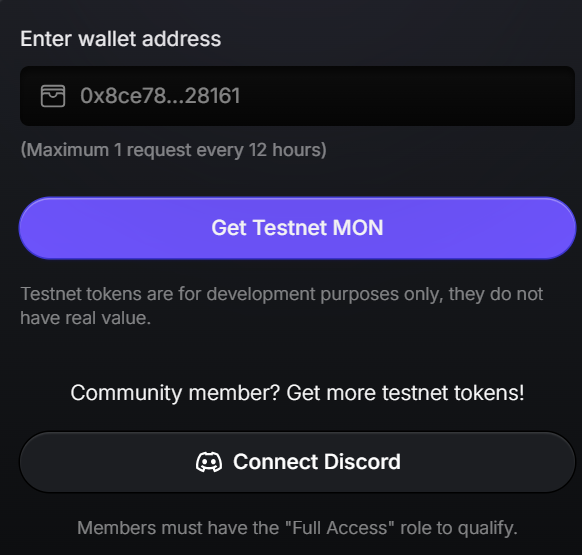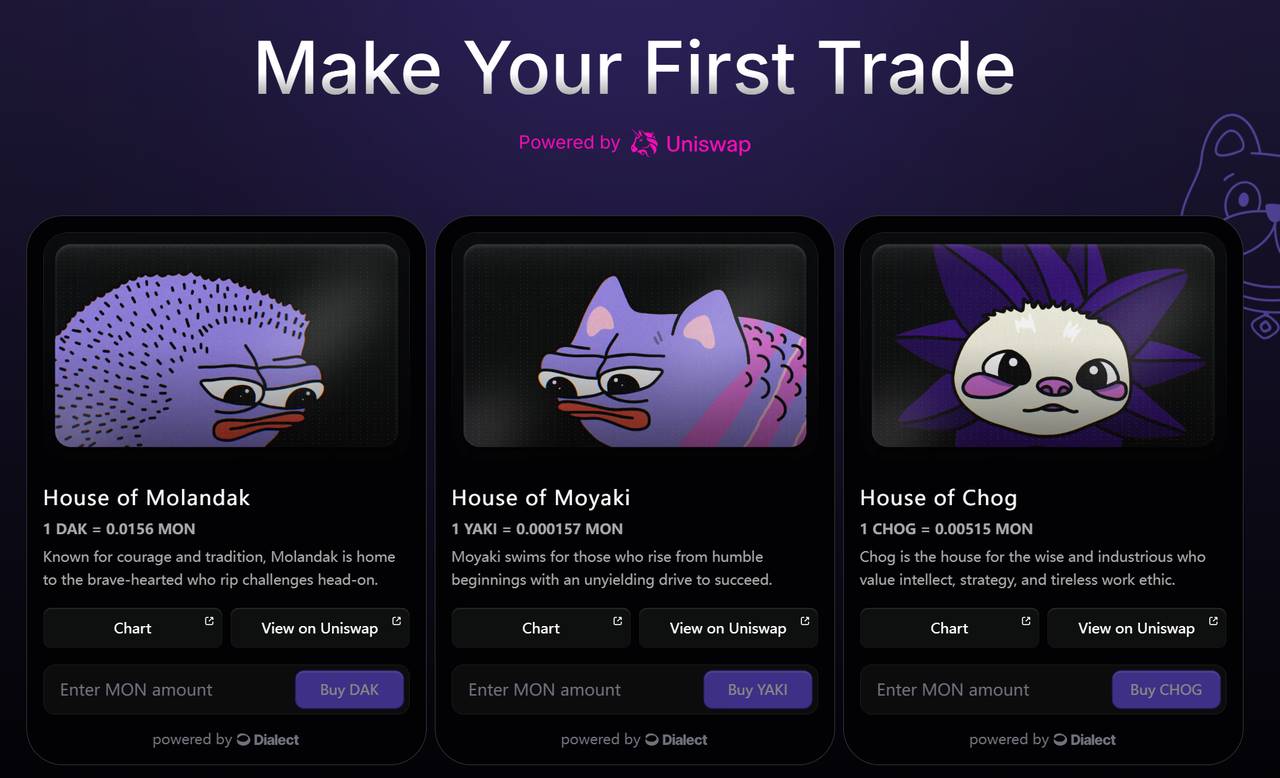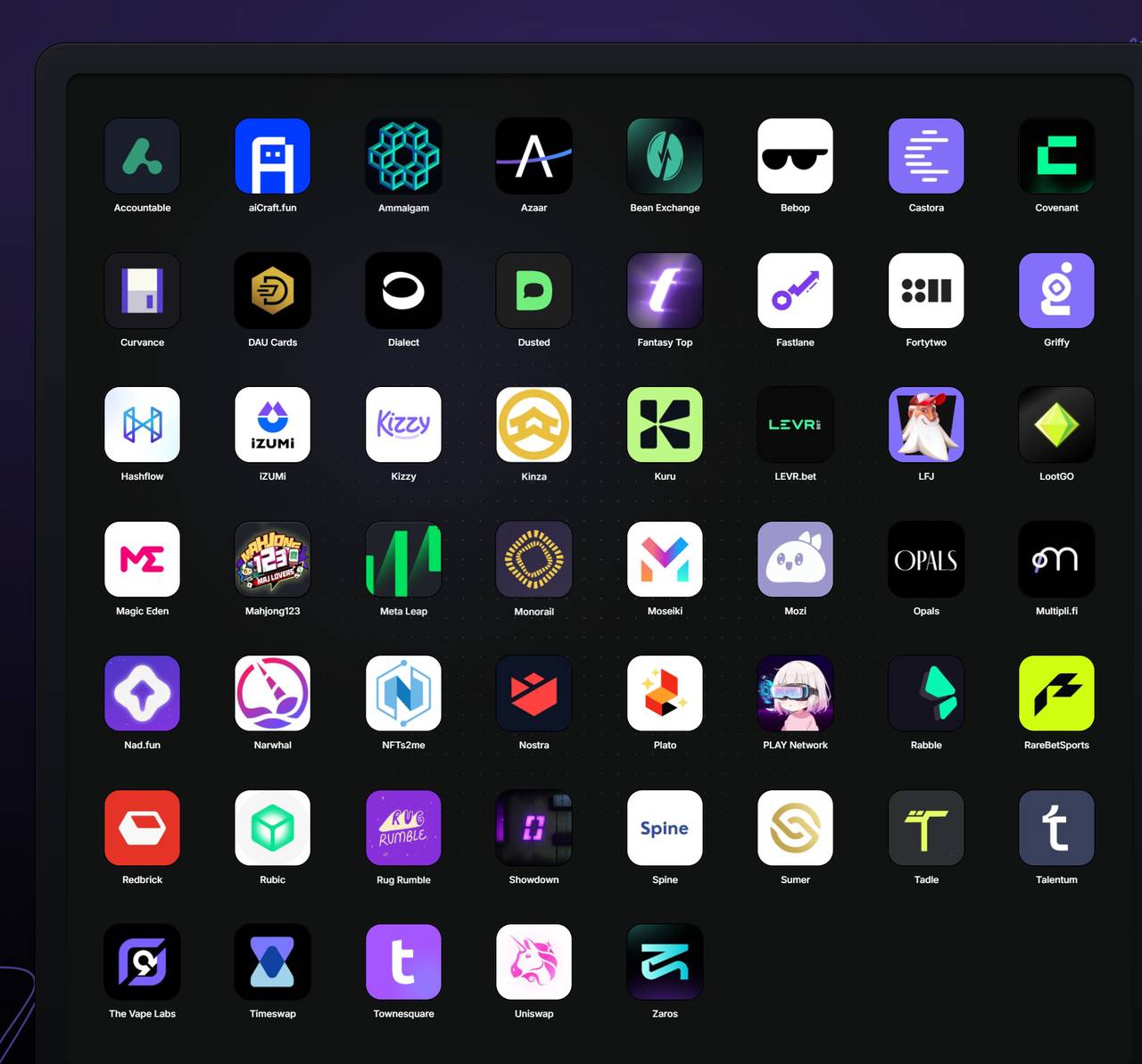In addition to participating in testnet interactions, helping Monad write tutorials, submitting bugs or constructive feedback, assisting with localization promotion, etc., there is also a certain probability of receiving official rewards.
Written by: 1912212.eth, Foresight News
On February 19, the king project Monad officially launched its testnet. As a project characterized by ultra-high throughput, low-cost transactions, and full compatibility with the Ethereum Virtual Machine (EVM), the launch of Monad has not only attracted the attention of many developers but also ignited the enthusiasm of ordinary users to participate in testing.
This article will provide you with a detailed introduction to Monad's project background and financing situation, how to obtain test tokens, and a specific guide on participating in testnet interactions, helping you quickly get started with this rising star project and reap great rewards.
High-Performance Public Chain Monad
Monad is a Layer-1 blockchain focused on scalability and high performance, aiming to address the pain points of existing public chains (such as Ethereum) in transaction speed and cost. Its core goal is to achieve an ultra-high throughput of 10,000 transactions per second (TPS), while keeping gas fees at a very low level and maintaining seamless compatibility with the Ethereum ecosystem. Compared to current mainstream public chains, Monad's performance targets even exceed those of Solana (approximately 1,500 TPS), which has led the community to have high expectations.
Monad's technological innovations are mainly reflected in two aspects. The first is its unique MonadBFT consensus mechanism, which is an optimized Byzantine fault-tolerant algorithm that can significantly improve transaction confirmation speed while ensuring decentralization. The second is a parallel execution architecture that allows transaction and smart contract computation tasks to occur simultaneously, greatly enhancing network efficiency. These features make Monad theoretically suitable not only for everyday payment scenarios but also for supporting complex decentralized applications.
Behind Monad is a core team that includes Keone Hon (CEO), who has worked at top fintech companies like Jump Trading, along with other technical experts who have been deeply involved in distributed systems and cryptographic technology for many years. With strong technical capabilities and a clear vision, Monad has performed impressively in the financing market. According to public information, Monad Labs completed a $225 million seed round of financing led by Paradigm in early 2024, setting a new record for financing amounts for Layer-1 projects at that time, with participation from well-known venture capital firms such as Electric Capital, Coinbase Ventures, and Castle Island Ventures.
Obtaining Test Tokens to Participate in Testing
Currently, wallets that support the Monad testnet include Phantom, OKX Web3 Wallet, Backpack, etc. After confirming the installation of a compatible wallet, select to add this network to the wallet.

Network parameters are set as follows:
Network Name: Monad Testnet
RPC URL: https://testnet-rpc.monad.xyz
Chain ID: 10143
Currency Symbol: MON
Block Explorer URL: https://monad-testnet.socialscan.io//
The first step to participate in the Monad testnet is to obtain test tokens. The tokens in the testnet are not real assets and are only used for simulating transactions and testing functions.
The official website provides several ways to obtain test tokens, and users can choose the method that suits their needs.
Official Faucet
Monad has set up a faucet function on its testnet webpage. Users only need to connect a compatible wallet (such as MetaMask), enter their wallet address, and complete a simple captcha verification to receive a certain amount of test tokens. To prevent abuse, there are limits on the number of requests and amounts per day, with a maximum of one request every 12 hours. (If you encounter issues while using the faucet, please check your existing EVM address—it may already have funds there.)

Community Tasks and Airdrops
The Monad team has launched several testnet tasks in collaboration with the community, where users can earn additional test tokens by completing specified actions. For example, following the official accounts on Discord or Twitter, participating in AMAs (Ask Me Anything events), or inviting friends to join the testnet can all provide opportunities for rewards. Currently, Monad has airdropped test tokens to over 8.8 million active Ethereum addresses (indicating that these addresses may have passed a witch screening).
Users can click the link to check the number of available test tokens:
https://testnet.monadexplorer.com/
Third-Party Platform Support
Some blockchain testing tool platforms, such as Alchemy or QuickNode, may collaborate with Monad to provide test token distribution services. Users can apply through the developer pages of these platforms, with a process similar to the official faucet, but occasionally with additional reward tokens, suitable for developers needing large amounts of test tokens. When obtaining test tokens, it is recommended to use wallet addresses specifically configured for the testnet to avoid confusion with mainnet assets.
Interaction Guide
After obtaining test tokens, users can start interacting with the Monad testnet. Here are the main steps to participate in testing:
Basic Interaction: Transfers and Transactions
The simplest way to interact is to perform test token transfers. Users can send a small amount of MONAD to other addresses (such as a friend's test wallet) to experience transaction speed and fees.

Deploying and Calling Smart Contracts
For developers, Monad's EVM compatibility is a highlight. Users can write smart contracts using Solidity and deploy them to the testnet using tools like Remix or Hardhat. After deployment, they can call contract functions (such as a simple counter or token transfer) to test Monad's parallel execution capabilities. The official documentation for developers is provided (presumably located at monad.xyz/docs), and it is recommended to refer to example code for a quick start.
Participating in Ecosystem DApp Testing
The Monad testnet may have already launched some early DApps, such as DEXs or NFT marketplaces. Users can find these applications through block explorers or community recommendations, and interact after connecting their wallets. These actions not only help familiarize users with the ecosystem but may also accumulate points for future mainnet airdrops.
Ecosystem Official Website:
https://www.monad.xyz/ecosystem

Precautions
Security: The testnet does not involve real assets, but users should still be cautious of phishing links and counterfeit websites, prioritizing official channels.
Feedback: Monad encourages users to report bugs or suggestions found during testing, which can be submitted through the official website or Discord.
Record Keeping: Save interaction records (such as transaction hashes) for future activities.
Finally, if you participate in testnet interactions, help Monad write tutorials, submit bugs or constructive feedback, assist with localization promotion (operating Twitter, etc.), or help introduce industry resources to the project team (interview coordination, bringing in well-known project parties), there is also a certain probability of receiving official rewards.
免责声明:本文章仅代表作者个人观点,不代表本平台的立场和观点。本文章仅供信息分享,不构成对任何人的任何投资建议。用户与作者之间的任何争议,与本平台无关。如网页中刊载的文章或图片涉及侵权,请提供相关的权利证明和身份证明发送邮件到support@aicoin.com,本平台相关工作人员将会进行核查。




